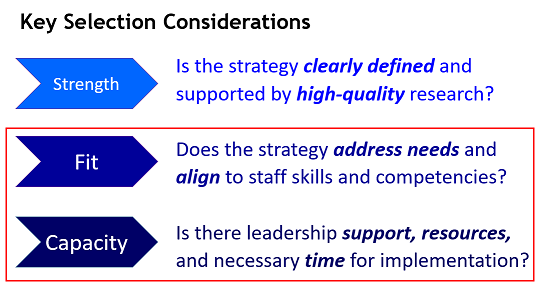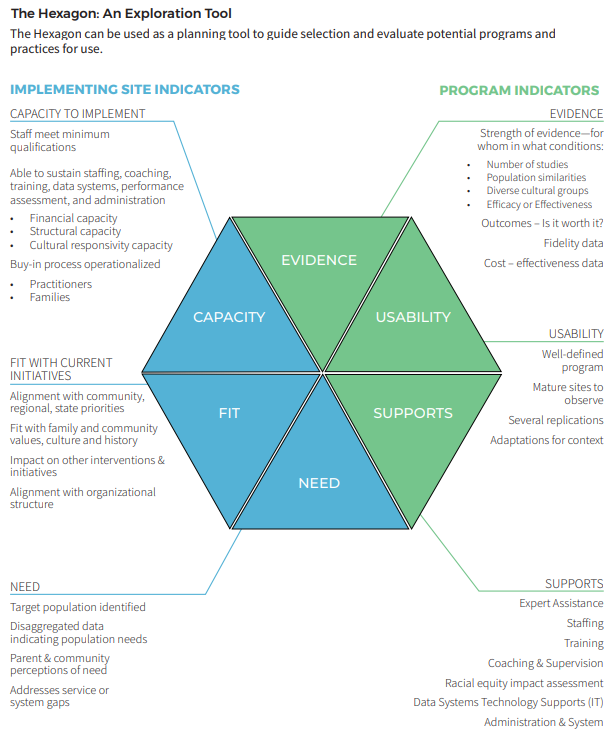You are here
Selecting EBIs: Using Contextual Fit to Choose the Right Solution for Your Context
NEW! Recorded in December 2019, Federal Programs Unit staff define “EBI”, discuss “levels of evidence” under ESSA, and step through three key contextual fit considerations when selecting EBIs: Evidence, ESSA, and Contextual Fit Webinar and PowerPoint
While strength of evidence is necessary, it is not sufficient for identifying solutions that align to local contexts. Contextual fit can be understood as the match between an intervention and the values, needs, population to be served, skills, and resources of those who implement and experience the intervention.[1] Contextual fit can be easily thought of as the fit of the intervention to the local setting, and the capacity of the system to implement it.
Guiding questions for exploring contextual fit of an EBI:
Fit: Does the strategy address needs and align to staff skills and competencies?
- Target Population
- Does the research population reflect the local student population? Consider students’ grade level, special education status, English learner status, for example.
- Identified Need
- Does the research address the identified need of the students, school, or district being served? Consider the type of academic or behavioral issue, for example, and whether there is strong alignment between the study and the local context.
- Current Initiatives
- Does the initiative complement the strategic goals of the school or district where the EBI is to be implemented?
- Does the intervention resonate with stakeholders (e.g., school leaders, teachers, parents)?
Capacity: Is there leadership support, resources, and necessary time for implementation?
- Capacity
- Do staff have the necessary skills and knowledge to do this work?
- Does the district/school have adequate funding to support the intervention sustainably?
- Supports
- Does the school/district need to seek expert assistance to implement the intervention?
- What training, coaching, or supervision would increase the likelihood of effective implementation?
- Does the district/school need data system enhancements to thoughtfully implement the intervention?
The Hexagon Tool
The National Implementation Research Network (NIRN) developed the Hexagon Discussion and Analysis Tool to help organizations evaluate new and existing programs and practices for contextual fit.[2] Six contextual fit and feasibility factors comprise the tool:
[1] Horner, R., Blitz, C., and Ross (2014). Investing in What Works Issue Brief: The Role of Contextual Fit When Implementing Evidence-Based Interventions. American Institutes for Research (AIR).
[2] The Hexagon: An Exploration Tool. (2019). Hexagon Discussion & Analysis Tool Instructions. National Implementation Research Network at the University of North Carolina at Chapel Hill.





Connect With Us





